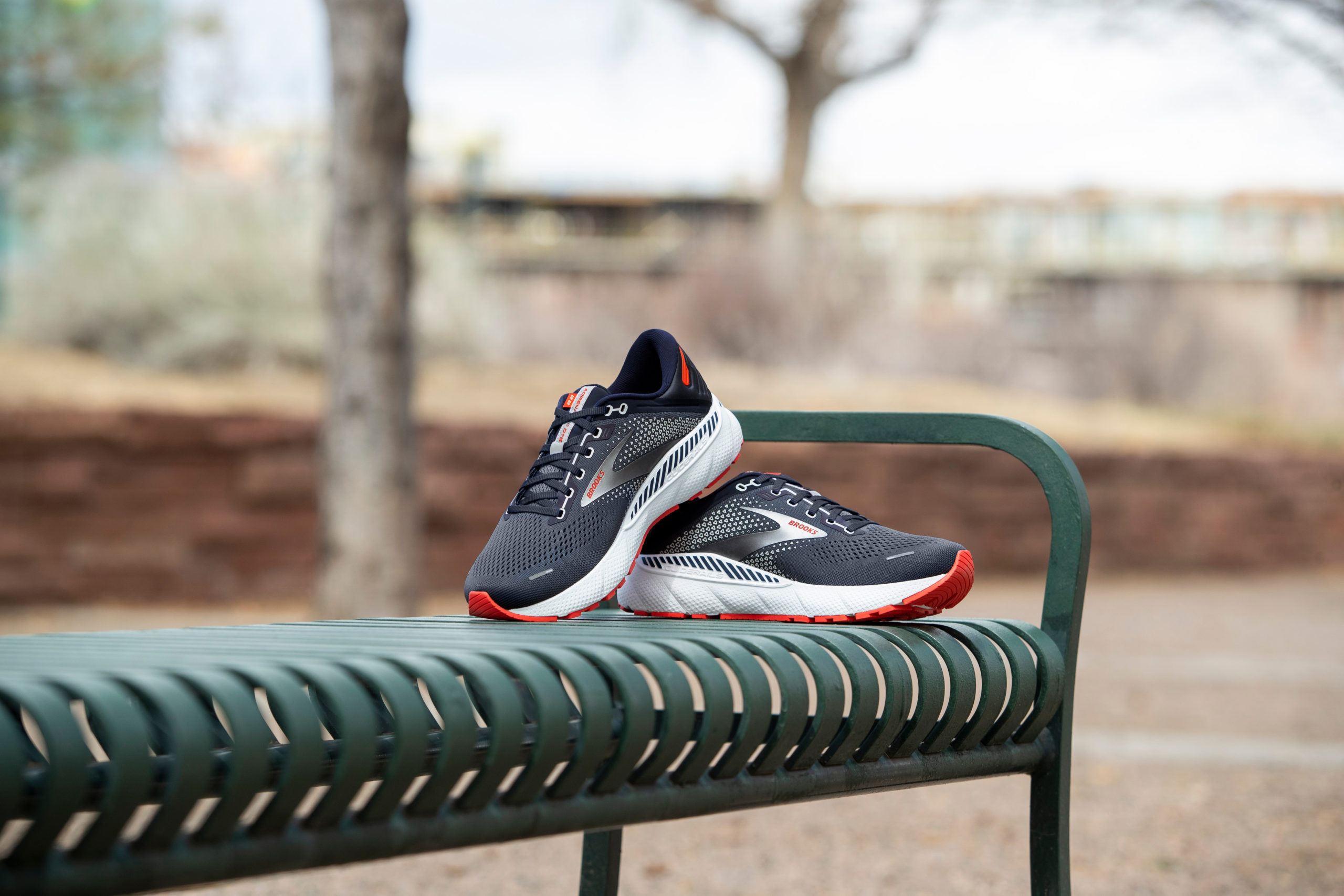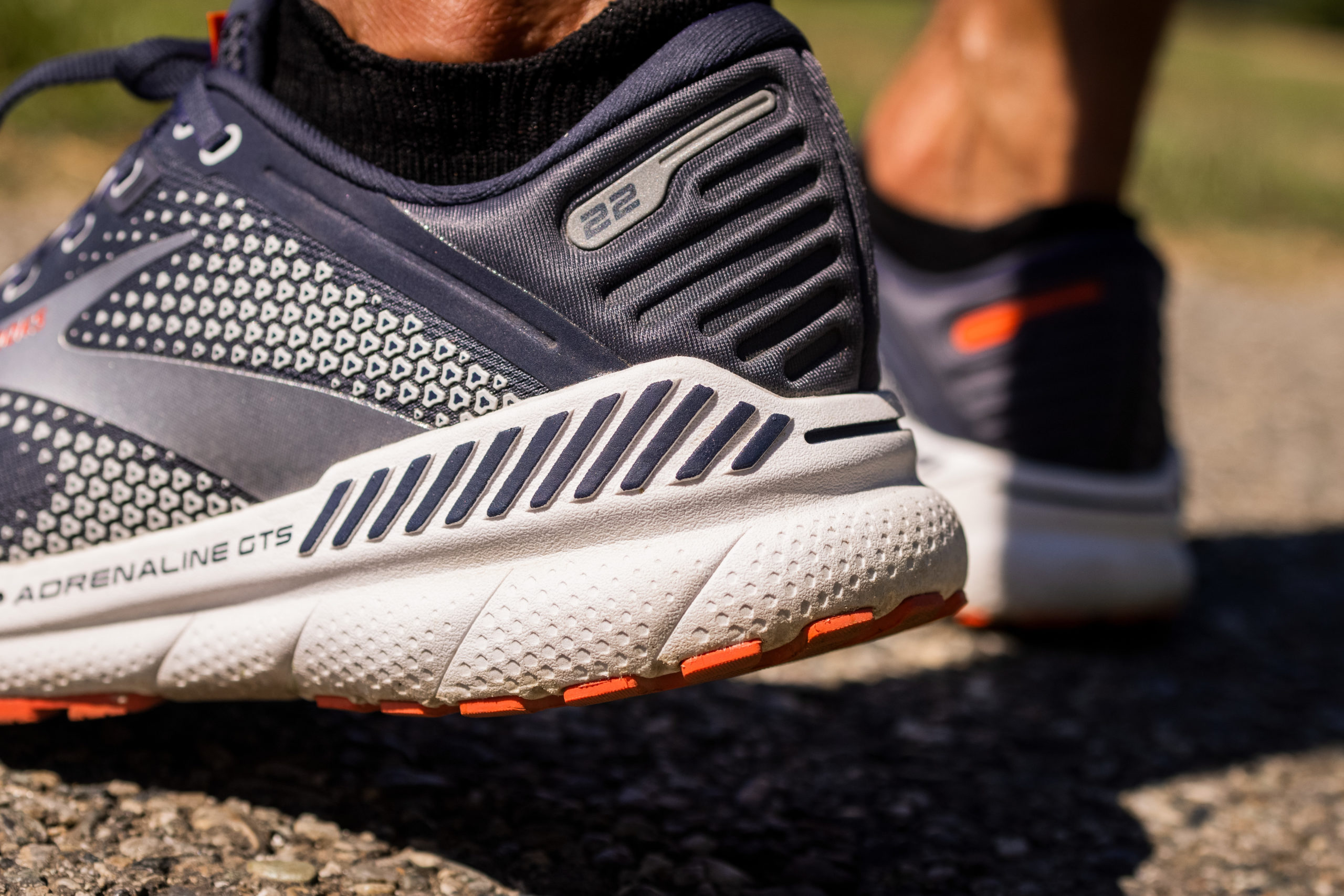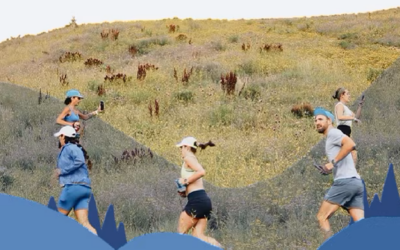Welcome to our tech talk, a place where we dive into how we power our running shoes.
Tech is a key focus and part of what we do here at Brooks and we wouldn’t have the range that we have without investing the time into research, testing and of course, you, the runner.
What’s your signature?
Our Run Signature philosophy has been our guiding principle in run shoe technology for almost a decade.
Run Signature is the scientific concept that each runner’s body is unique, and therefore we can each benefit from different product features to ensure optimal performance, comfort, and reduced injury risk.
We know that there is not one way to run. Each runner’s posture is slightly different at landing and throughout the running step. This is because every runner’s anatomy is unique. Because of our unique anatomy, each one of us has a path of least resistance in our joints, which we call the habitual motion path. We believe that a shoe should promote movement along this habitual motion path to minimize unwanted deviations that lead to increased loading on the joints. We also believe that focus should be on keeping the knee ¬— not just the foot — in its habitual motion path since this is where most running injuries happen.
Run Signature is about guidance, not correction. We’re not here to fix your running style — there’s no wrong way to run. Instead, identifying your Run Signature stabilizes your stride. This helps prevent injury and provides the best possible run experience for you.
Insights and more insights
Have you ever wondered how running shoes are made? When we concept, create, and build our shoes, we start with the runner first. We’ve talked with thousands of runners around the world to understand what they want on the run. We call these findings runner insights. We rely on real runner feedback to determine fit, function, and design of our future products.
Our work in the lab, which we call our science insights, goes hand in hand with our runner insights. We study biomechanics, or the way your body moves on the run. We bring runners into the lab so we can look at everything from exact toe movements and foot strikes to changes in stride over the duration of a run.
In addition, our full mechanical lab tests every part of the shoe. We test for things like energy return with an impact tester, flexibility to see how smoothly they move with the foot from heel-strike to toe-off, and durability over the course of 2414 kilometres.
For perspective, that’s a really long run from our headquarters in Seattle to Tulsa, OK.
All this data we collect from runner and science insights help us understand the body in motion from every angle.

Let’s talk about tech, baby
We’ve been stuffing awesome innovations into our running shoes since the 70s. Some have helped you feel fast, some comfortable, and others stable.
Check out our innovation timeline to learn more about some of the neat things we’ve developed over the years:
1977: Varus Wedge – reduces overpronation
1983: Diagonal Rollbar – a denser foam on the inside of the shoe that keeps runners from rotating inward and toward the outside and a softer EVA to keep the shoe from tilting awkwardly for walkers
1986: Kinetic Wedge – forefoot stabilizing wedge allows the foot to arch more naturally, reducing stress-related injuries
1989: HydroFlow – two-chambered system that moves silicone fluid from a rear chamber into a front chamber of the shoe with each heel strike and then springs back when the heel lifts
2002: Progressive Diagonal Rollbar
2007: BioMoGo – first fully biodegradable midsole cushioning material
2014: Guiderail’s – provides holistic support that allows your hips, knees, and joints to move the way you naturally do.
2017: DNA AMP – super springy cushioning, delivers best-in-class energy return
2018: DNA LOFT – our softest cushioning, which instantly adapts to the runners’ individual stride, weight, and speed using a unique blend of materials to offer lightweight softness without sacrificing durability.
2021: DNA LOFT V2: V2 offers serious softness. Lighter and just as soft as the original, so every step feels even more like
running on air.
2022: DNA LOFT V3 – The most amplified cushioning experience yet, we took our DNA LOFT foam and injected it with nitrogen, which amplifies more of the cushioning properties — increasing softness, decreasing weight, and improving energy return — all without sacrificing durability. Excitingly the Glycerin 20 & Caldera 6 will be the first models to feature DNA loft V3. Launching on July 1, 2022.
Next steps
So, what’s on the horizon for innovation at Brooks? We are using our Run Signature philosophy to create more advanced personalization options.
For now, learn about which shoe technology might be best for you, and take our quick shoe finder quiz to get the perfect shoe for your workout.

Glycerin 20 Launch
Day(s)
:
Hour(s)
:
Minute(s)
:
Second(s)



